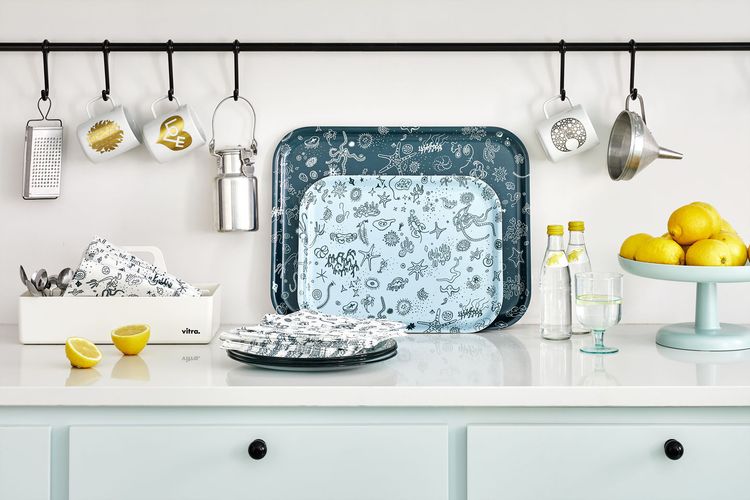ProductsChairsLounge chairsSofasOffice chairsChaises longuesStools & benchesSculpturesConference chairsAirport seatingStorage spaceMicro architectureDining tablesCafé tablesCoffee & side tablesDesksOffice furniture systemsConference systemsLightingClocksDecorative objectsCoat racks & wall shelvesTrays & vesselsNewBestsellerQuickly availableColour & materialAlexander Girard Antonio CitterioBarber OsgerbyCharles & Ray Eames George NelsonHella JongeriusIsamu NoguchiLounge chair finderOffice chair finderGift finderCare & repairSpare partsCare productsManufacturer warrantyVitra Circle StoresLounge Chair & OttomanHang it allInspirationsLiving roomDining roomHome OfficeChildren's roomOutdoorHome StoriesAugmented RealityColours & materialsHome SelectionWorkspaceFocusMeetingWorkshopClub OfficeCitizen OfficeStudio OfficeDynamic SpacesHospitalityAirportsEducationCo-WorkingHealthcareOur ClientsDestination WorkplaceA case for classicsOffice chairsDancing OfficeHome StoriesThe Home Selection fabrics from Kvadrat and DedarAugmented Reality - bring Vitra products into your homeSchool of Design: Showcase work and knowledgeA case for classicsColour & materialAn open house An office landscape - without walls or partitionsHigh comfort of low energyA leading space for a leading art collegeServicesCare & repairSpare partsCare productsManufacturer warrantyFAQ and contactInstructionsConsulting & Planning StudioVitra Circle StoresConsulting & planning in the VitraHausInstructionsOutdoor care instructionsRepair, maintenance, overhaul at the Vitra Circle Store Campus ProfessionalsCAD dataProduct factsheetsCertificatesSustainability reportInstructionsEcology informationpConPlanning examplesColour & Material LibraryCertificates and standardsHome SelectionTo the dealer loginOur ClientsMyntDestination Workplace: Visit our clients and partnersAnagram SofaMikadoTyde 2 on castorsACXDancing OfficeOffice chairsMagazineStoriesConversationsExhibitionsDesignerProject VitraA Capsule in TimeSeeing the forest for the treesRefining a classicMynt is a lifetime achievement to meA desk like a typefaceV-FoamSculptural IconsGames bring people together – just like good officesLet there be light!Social SeatingJust Do It!EVER GREENWhy the Eames La Fonda Chair was designedWhen a Sofa is more than just a Sofa: Anagram100% virgin wool – 100% recyclableAn archive is like a time capsuleVitraHaus Loft - A conversation with Sabine MarcelisA 1000 m2 piece of furnitureFrom a toy to an objectThe Eames Collection at the Vitra Design MuseumAbout the partnership between Eames and VitraVitra CampusExhibitionsGuided tours & workshopsFood and drinkShoppingActivities for familiesArchitectureYour eventConsulting & planning in the VitraHausPlan your visitVitra Campus appCampus EventsNewsVitraHausVitra Design MuseumVitra SchaudepotVitra Circle Store CampusOudolf GartenAbout VitraSustainabilityJobs & CareersDesign processThe Original is by VitraHistory - Project Vitra
Things from the Sea by Ray Eames
A Vitra Anecdote

Writings about Charles and Ray Eames often begin by mentioning Charles’s trained eye as an architect and Ray’s education as a painter and describe how these roles influenced their work, but they can ultimately be described as dedicated designers, business partners and lovers with blurred lines between their areas of expertise.
Charles and Ray Eames were like yin and yang – they each complemented and completed the distinctive nature of the other. Their persistent curiosity about the world around them led to a diverse range of design solutions on all scales, from architecture and furniture to films, graphic art and repeating patterns.
Charles and Ray Eames were like yin and yang – they each complemented and completed the distinctive nature of the other. Their persistent curiosity about the world around them led to a diverse range of design solutions on all scales, from architecture and furniture to films, graphic art and repeating patterns.

After marrying in the early 1940s, Charles and Ray Eames settled in Los Angeles. They would frequently head to the dunes of the Pacific Ocean to collect things in the sand that inspired them, like stones, fossils and shells. In their home the objects were displayed out of their usual context to enrich the interior with visual surprises – for the couple’s own pleasure and that of their guests.

The Sea Things motif is one of a few examples where Ray Eames can take sole credit. The pattern was designed by Ray Eames in 1945 and later submitted to the ‘Competition for Printed Fabrics’ organised by the New York Museum of Modern Art in 1947. It later received an honourable mention and was included in the exhibition ‘Printed Textiles for the Home’.

The Sea Things pattern is a frolicsome delight revealing new creatures with every glance. The whimsical shapes inhabit a sparkling marine landscape that seems to come alive before one’s very eyes. Sea Things perfectly captures Ray Eames’s curiosity about nature, illustrating how living plants and animals caught her attention and sparked her creativity during her walks on the beach.
© Eames Office, LLC
Ray Eames said: ‘I never gave up painting, I just changed my palette’ – and with the Sea Things pattern she demonstrates how her creative skills as a painter can be used for other purposes than ‘one-off’ artworks by conceiving an organic underwater universe that can be repeated vertically or horizontally and applied to different surfaces and mediums – in this case, table runners, napkins and trays.
Ray Eames said: ‘I never gave up painting, I just changed my palette’ – and with the Sea Things pattern she demonstrates how her creative skills as a painter can be used for other purposes than ‘one-off’ artworks by conceiving an organic underwater universe that can be repeated vertically or horizontally and applied to different surfaces and mediums – in this case, table runners, napkins and trays.

Publication date: 5.3.2020
Author: Stine Liv Buur
Images: Lorenz Cugini, © Eames Office, LLC


